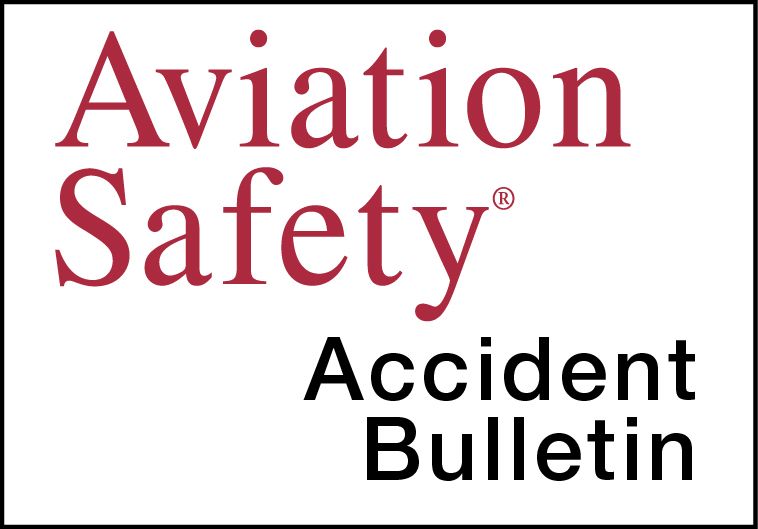AVweb’s General Aviation Accident Bulletin is taken from the pages of our sister publication, Aviation Safety magazine. All the reports listed here are preliminary and include only initial factual findings about crashes. You can learn more about the final probable cause on the NTSB’s website at www.ntsb.gov. Final reports appear about a year after the accident, although some take longer. Find out more about Aviation Safety at www.aviationsafetymagazine.com.
September 3, 2022, Seeley Lake, Mon.
Cessna 180
At about 1500 Mountain time, the airplane was substantially damaged when it lost engine power after a low runway pass to check for wildlife. The pilot and passenger were seriously injured. Visual conditions prevailed.
The pilot reported that after refueling the airplane, he departed on a 733 nm flight, cruising at between 10,500 and 12,500 feet MSL and burning between 9.5 and 10 gph. During the descent, he enrichened the mixture and applied carburetor heat. The pilot conducted a low approach with medium power to inspect the runway for wildlife. As he initiated a climb and turned onto a left crosswind, the engine lost all power. The pilot initiated a forced landing to a nearby clearing, but the airplane impacted trees and came to rest in a nose-low attitude.
September 4, 2022, Galt, Calif.
Beech 58 Baron
The airplane was substantially damaged at about 0850 Pacific time when it reportedly collided with terrain in a flat spin. The flight instructor and pilot receiving instruction were fatally injured. Visual conditions prevailed.
Multiple witnesses reported seeing the airplane spinning. One witness stated that “it was not nose down but more flat.” Another witness stated there was no engine noise. Automatic dependent surveillance-broadcast (ADS-B) data show that, at about 0837 and with the airplane maintaining 4600 feet MSL, the airplane’s groundspeed began to slow from 168 knots to 87 knots. Groundspeed then increased to 149 knots. At about 0839, the airplane began to decelerate again. A minute later, while decelerating through 100 knots, the airplane began a left turn. The last ADS-B data points show it continuing to decelerate and descend in a left turn.
September 4, 2022, Freeland, Wash.
de Havilland Canada DHC-3 Otter
At 1509 Pacific time, the airplane was substantially damaged when it impacted the water and sank. The pilot and nine passengers were fatally injured. Visual conditions prevailed for the scheduled FAR Part 135 flight.
Tracking data show the airplane flying a southerly heading before turning south-southeast, while maintaining between 650 and 975 feet MSL with a groundspeed between 115 and 125 knots. At 1508:43, altitude increased to 1125 feet as groundspeed slowed to 109 knots. At 1508:49, altitude was 875 feet and the groundspeed 100 knots. The tracking data ended at 1508:51, at an altitude of 700 feet and groundspeed of 55 knots.
Witnesses reported the airplane was in level flight before it entered a slight climb and then pitched down into a near-vertical descent. Several witnesses described the airplane as “spinning,” “rotating” or “spiraling” during the steep descent. One witness reported hearing engine/propeller noise. The airplane continued to descend until it impacted water in Mutiny Bay.
According to the NTSB, the airplane’s most recent 100-hour inspection was performed on September 1, 2022. Inspections required by airworthiness directives on the control column lower assembly and elevator control tabs were performed. The previous 100-hour inspection was performed on August 16, 2022; work included the recurring AD inspections noted above and replacing the horizontal stabilizer hinge bolts.
September 5, 2022, Tupelo, Mississippi
Beech 36 Bonanza
The pilot was performing touch-and-go landings. On approach, he heard a horn but thought it was the stall warning because it went off when he increased manifold pressure. But then he heard sheet metal grinding on concrete as the airplane settled.
He applied full power and the airplane lifted off the runway. He then extended the landing gear, but the airplane’s left wing dropped, and the airplane impacted the ground, sustaining substantial damage to the left wing and fuselage. The pilot later reported there were no pre-accident mechanical problems with the landing gear system or the rest of the airplane that would have precluded normal operation.
This article originally appeared in the May 2023 issue of Aviation Safety magazine.
For more great content like this, subscribe to Aviation Safety!




































I have never flown a Bonanza, but the 182 RG. They make completely different noises as to the stall horn and the landing gear alarm. I suspect that the Bonanza is similar?
Instead of touch and goes he was doing touch and scrapes?
🤣🤣🤣